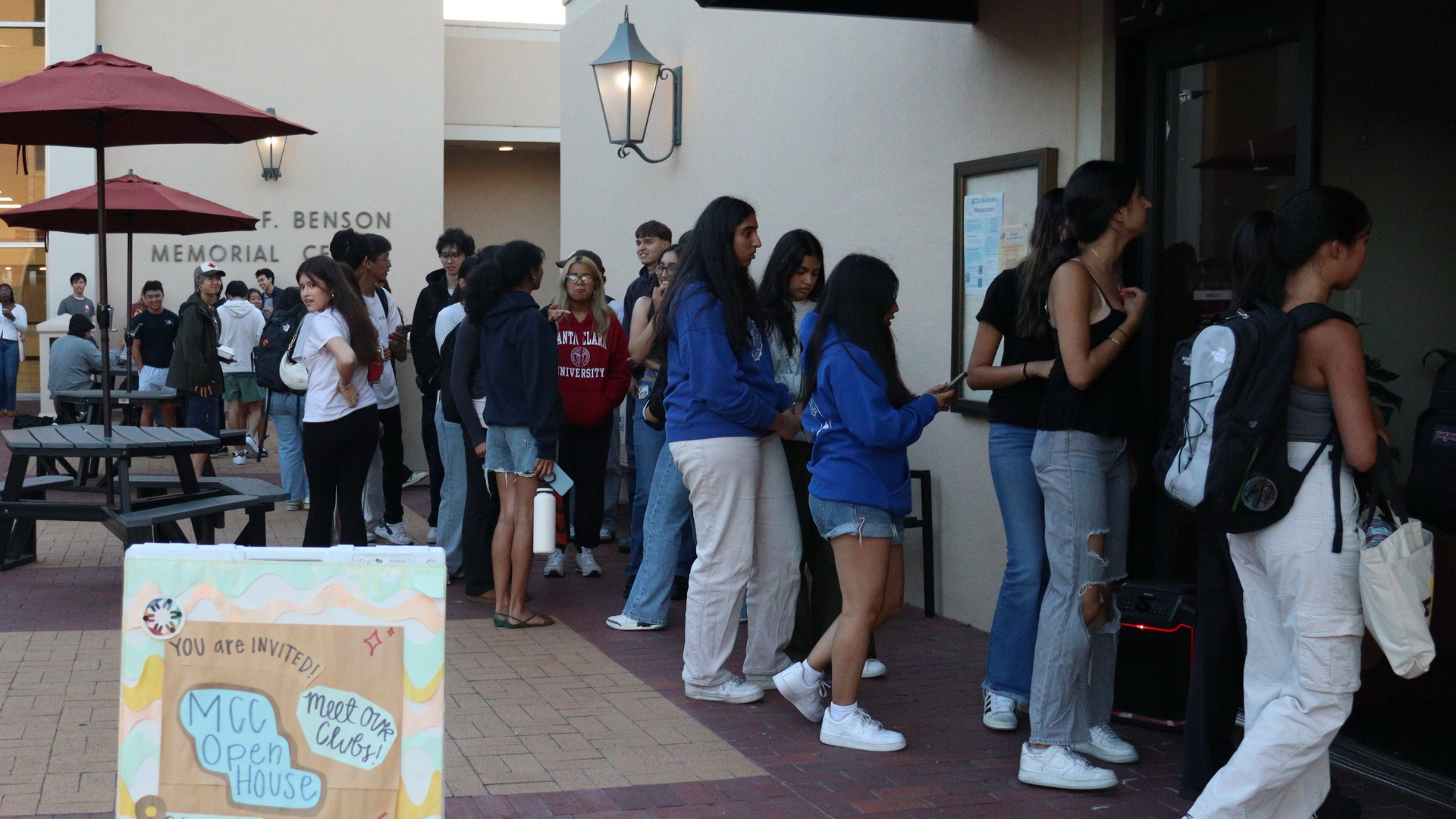The Multicultural Center's Vision for Inclusivity at SCU
Photo Credit: MCC
Students line up outside of Shapell Lounge for the Multicultural Center’s 2024 Open House.
The Multicultural Center (MCC), home to 16 cultural clubs, will renovate its home base of Shapell Lounge this academic year. The new directors hope the changes will allow for more inclusivity in a rapidly changing environment at Santa Clara University.
Denae Rivera, director of the MCC, and Kenneth Park, associate director of the MCC, shared their vision of what the new Shapell Lounge will look like. It includes small meeting rooms, an all-gender bathroom and a kitchen area. A hope they have in the future is to have an in-house therapist, but they noted most of these changes will be coming at a slow pace.
“If anybody has been in the Shapell Lounge, [the wall between the MCC office and lounge space] is going to get torn down,” Rivera said. “So they are trying to make it more of an open space in the lounge area.”
Park and Rivera explained that these additions will provide their students with more resources and meet basic needs, such as the addition of a bathroom. They feel it’s necessary to have these inclusions so students feel they can come to the Multicultural Center and find everything they need.
These changes have a long history behind them. The MCC came together in the Unity movement, where the need for a proper meeting space for minority students to feel safe and comfortable. The clubs were moved from a Benson cubicle to the Graham Hall basement, and later to its current location—Shapell Lounge. With each new Unity phase, the MCC addresses the various emerging needs of students of color on campus.
Unity 5, declared in March 2023, had a central goal to expand Shapell Lounge after efforts had been ignored for years before. The University agreed to fund its expansion, and MCC leaders feel it shows the University’s commitment to supporting the MCC community and its students of color.
As the University grows in diversity, so has the Multicultural Center and its role in supporting the students of color on campus. As they go into the fall quarter, their hope is that the Multicultural Center continues to be a safe space for the growing community of people of color.
“Until SCU can be a diverse school, that will continue to be the role of MCC going into the future: to keep supporting students so that they can feel like they belong on campus,” said Park.
MCC Advisor Chris Harris also shared that he expects that the changes and additions will help create more of a community and show support for the clubs who come together in Shapell Lounge.
Rivera and Park didn’t just speak about the upcoming renovations, but also about their role in ensuring diversity and inclusion are supported on campus. Although the University is no longer considered a predominantly white institution (PWI) according to statistics the University provided of the class profile, Rivera and Park disagree.
“To claim that it’s no longer predominantly white is a little bit of a stretch,” Park said.
Universities are classified PWIs when less than 50% of their student population are students of color. In the class of 2027, 55% of students identified themselves as students of color. Of that 55%, 22% are Asian, 20% are Hispanic, 8% are two or more races, and 5% are Black or African American.
Although the University may have more students of color, Rivera and Park find that it’s hard to see that diversity on campus. For them, it’s a problem for the University to categorize all students of color as “non-white” to claim it is diverse rather than recognizing the unique cultures found on campus.
“You still got small pockets of different ethnic and racial groups or cultural groups, but then that doesn’t mean they should all be grouped together,” Rivera said.
Rivera and Park believe that by the University making statements on their website that the school is now 55% non-white, it fails to represent each individual cultural and racial group. To say that the school is diverse because they have more Hispanic and Black students devalues the individuality of these groups.
According to the MCC leaders, while the University is statistically now not a PWI, the BIPOC community on campus is still underrepresented. As Park and Rivera explain, most students of color typically find that their classes are majority white. They believe their role is to celebrate the different identities of students and that they feel represented at the school they go to.
“[The] MCC was directly founded out of student voice, student advocacy, banding together and saying ‘This is what we want,’” Harris said. “This is important for us and this is what we need in order to sustain and to thrive here.”
As the MCC continues to undergo changes, Rivera and Park expressed their goals for the future in expanding and growing throughout campus.
“[The MCC is] so closed off from non-students of color on campus,” Rivera said. “But I also think they’re also a part of the Santa Clara community that we interact with every single day.”
Park and Rivera want their events to be accessible for a wide audience at the University so that a larger community can be created as people celebrate each other’s cultures. They hope to collaborate more with other chartered student organizations to broaden their community.
The MCC’s mission for the academic year is to ensure that every student on campus feels a sense of belonging, whether that be as an ally or as a member.
“That’s why the MCC was created,” Rivera said. “So that we can become our own big community that stands with each other and continues that solidarity.”
